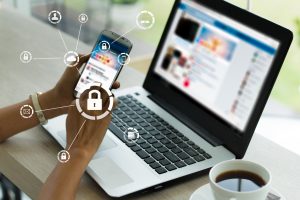Wi-Fi has become virtually a staple in our technologically-enhanced lives. Its convenience increases productivity in countless industries, academics and even the family home. Retail establishments such as Panera Bread, McDonald’s and Barnes & Noble offer free Wi-Fi in their stores as an amenity to get customers to browse and buy their products. While “free Wi-Fi” might seem like a no-brainer, customers should keep in mind the inherent risks of free Wi-Fi.
What’s the Big Deal? It’s free
Since it’s free, most establishments do not use Wi-Fi encryption to secure their respective networks thus offering hackers a way to steal your usernames and passwords. Some explained the reason for using unencrypted 802.11g was to ensure maximum compatibility between communication devices.
A Hacker’s Hotspot
“Wardriving” is the idea of driving around town and looking for a Wi-Fi network that is unencrypted or has weak encryption and can be easily cracked. With zero or minimal security, a Wardriving Hacker can intercept, unscramble and figure out the information being sent between a customer’s laptop to the Wireless Access Point of an establishment. Another tactic that can easily swipe your login credentials is a Rogue Access Point. In this case, a hacker can set up a Wireless Access Point that imitates the true Access Point. If your notebook connects to this Rogue Access Point, you won’t see any difference as the hacker can duplicate the log-in screen with near 100% accuracy. This is like phishing, where you receive an alert email from your bank or credit card company asking you to click on their link and “verify” your account is okay by logging in.
What You Can Do
There are a few steps you can take to minimize the chance of your information getting stolen:
- Make sure your passwords are long and are fairly unique. Having “SMITH_1980” as one of your passwords wouldn’t be difficult to crack.
- Turn on you computers firewall and make sure your security software is up to date.
- When logging in, pay attention to the URL address along with any inconsistencies with the log-in page (i.e. spelling, inaccurate pictures).
- Check to make sure your laptop is connected to the correct Wi-Fi network and not to one with a questionable name.
- Access your banking and credit card accounts at home so as to minimize the chance of being a victim of financial identity theft.
- Speak to your employer’s IT department about a VPN connection. VPN stands for Virtual Private Network and allows you to connect to your company’s network in a secure way.
In Conclusion
By knowing the risks associated with free Wi-Fi service, you can minimize the chance of a security breach and possible identity theft.
Adapted via Geeks.com




